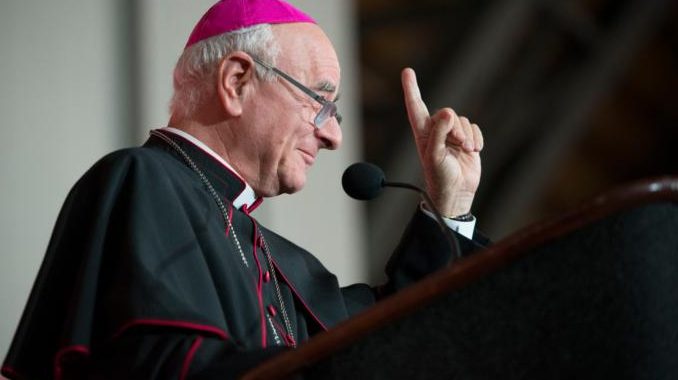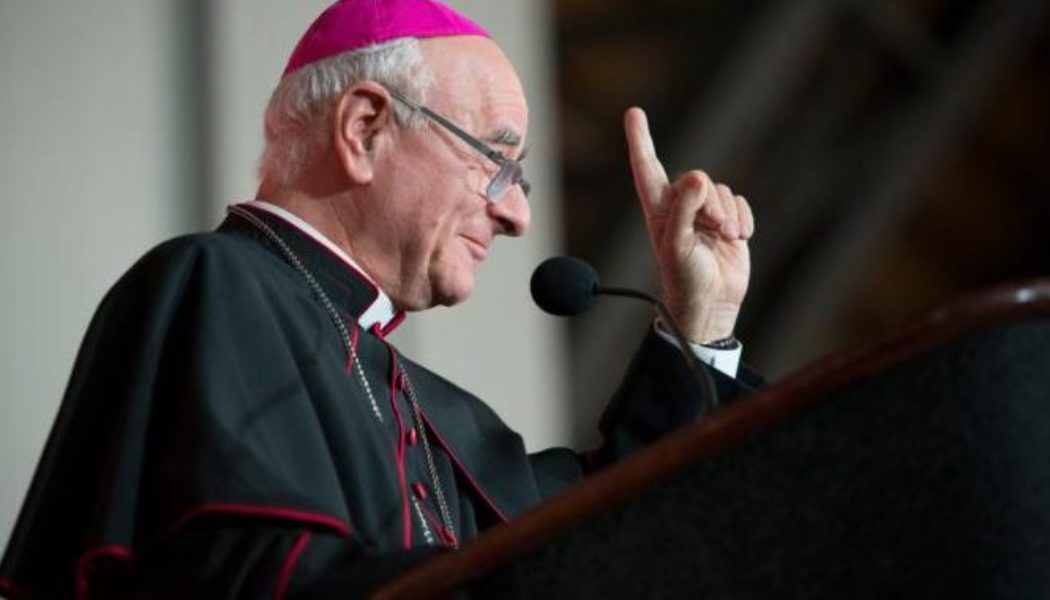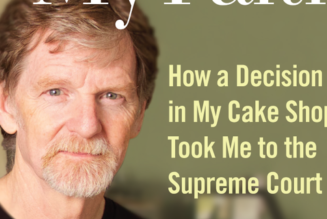
Mary Eberstadt, in her wonderful new book from Ignatius Press titled Adam and Eve After the Pill: Revisited (an updated version of her 2013 book on the same topic), makes a great case for why the sexual revolution has been a catastrophic disaster in both the lives of individuals and in the broader culture. Building off of this analysis, she goes on to point out that there are many people in today’s culturally bankrupt and spiritually exhausted world who are waking up to the fact that the sexual revolution has been premised upon a set of empirical falsehoods about human nature and overt lies and deflections about the true extent of the damage it has inflicted.
Therefore, she concludes that now is precisely not the time for the Church to wave the white flag of surrender and to accommodate itself to the sexual revolution. Not at precisely the moment when millions of our contemporaries are ripe for hearing the prophetic challenge of the Church’s traditional teachings on these matters.
But isn’t this waving of the white flag so very typical of the modus operandi of contemporary progressive Catholicism? Claiming for itself the mantle of mercy and pastoral sensitivity through its reading of the “signs of the times”, it is forever two decades behind the latest trends, like a hound dog chasing after a squirrel, panting heavily and with tongue on the ground, long after the squirrel has escaped up a different tree. Vatican II did indeed teach that we need to read the signs of the times. But it did so with the understanding that one first needs to understand the culture in order to evangelize, with laser-like specificity, the exact neuralgic points of modern anguish. We are to share in the “joys and hopes” of the modern world, but with an eye toward how those same joys and hopes are in fact better fulfilled by the Gospel than the deceptive fulfillments given by the flawed illusions of modernity. This is the true aggiornamento of the Council, not the progressive’s aggiornamento of the chameleon.
In other words, the Council sought a re-evangelization of the world through a prophetic proclamation of the Gospel, put forward as a deeper and truer Christocentric humanism and anthropology than that of modernity with its shallow nostrums and an ultimately self-defeating humanism, which is larded with a latent nihilism. And the current internal debates over moral theology that are currently roiling the Church present to us, once again, the pastoral choice: either engaging the world prophetically with a full and robust rendering of the Gospel or accommodating ourselves to it in the self-immolation of a false humility that postures as “dialogue”.
Ever defensive and apologetic, the latter approach evinces the tell-tale signs of an embarrassment over Church teachings on moral theological issues, which are portrayed as “behind the times”, in need of “reform”, and lacking in pastoral sensitivity. And this recourse to the language of sensitivity is often just mere code for “we need to find ways around this”.
This latter point is demonstrated clearly in how quickly the current proponents of “accompaniment” go from discussions of the need for pastoral sensitivity to discussions of how the Church needs to change her teachings on topics relating to the rainbow alphabet of our new cultural religion of inclusion and diversity in matters of sex and gender. From Cardinals McElroy Cupich, and Hollerich, to the Germanic synodal silliness, to the slippery words and ministrations of Fr. James Martin, S.J., among many others, we see this dynamic in play.
But what I want to highlight here are not the usual complaints from folks like me that this represents a recrudescence of a 1970’s style of theologizing, but rather to get to the nub of what was wrong with this theology, both then and now, as a pastoral response to modernity. And that nub is that it lacks prophetic bite and represents a flaccid mediocrity, which creates a form of Catholicism that is boring and uninteresting, flattened-out into the dull and stale categories of a worldly horizontalism that despairs of the notion that the Kingdom of Christ’s grace really has changed the world from the ground up and links us to God’s loving transcendence in deeply transformative ways. And, as such, it is wholly unsuited to the cultural crisis that we face.
Eberstadt makes this point as well and asserts that what we face today in the Church is a deep bifurcation between those who understand the need for a prophetic response to the cultural crisis at hand versus those who see no such prophetic need and who seem insouciantly oblivious to the toxic nature of the cultural pathologies they are asking us to embrace in the name of accompaniment and aggiornamento. The latter also seem oblivious to the fact that wherever this path has been attempted by mainline non-Catholic denominations it has ended in abject failure and the wholesale down-sizing of their communions into demographic and cultural irrelevance.
Certainly, the notion of accompaniment is a thoroughly legitimate one, and it has a long pedigree in the Catholic moral theological tradition and in pastoral practice. Any good pastor of souls knows this, and the best of them engage in it with a true soul of empathetic sharing in the sufferings of others. And the words of Pope Francis on this matter seem to me to be squarely within this tradition of discourse and practice. Nevertheless, he seems all too ready to allow his epigones in the clerical ranks, as well as in the theological guild, to use the concept as a tool for revisionist renderings of Catholic moral theology. He also continually empowers those who think this way all the while giving a cold shoulder to those who do not.
Which brings me to the recent statements from Archbishop Vincenzo Paglia, President of the Pontifical Academy for Life, who has stated that it is indeed possible for the Church to accept certain legal pathways allowing for doctor-assisted suicide. The proximate provocation of his remarks seems to be legislation that is currently under consideration in Italy that will allow for this, albeit under certain allegedly strict “conditions”, and which will include provisions that legalize doctor-assisted suicide even for those suffering from extreme forms of psychological illness.
Surely the good Archbishop is intelligent enough to know that in countries that have long since legalized such things that the initial legislation can now in retrospect be seen as the proverbial camel’s nose under the tent. The Dutch, for example, have recently expanded the “right” to doctor-assisted suicide to children as young as five years old, and they have long since allowed for the euthanizing of dementia patients incapable of consent, and have proven themselves most willing to aid in the killing of those suffering from psychological forms of depression. If Archbishop Paglia thinks that once the genie is out of the bottle in Italy that it will remain immune from this evolutionary process of expansion, then he is a fool.
But I doubt he is a fool. And in my view, his recent statements on this topic are merely the next application of his general revisionism in Catholic moral theology in the direction of a non-prophetic accommodation to the winds of secularity. He seems not to believe that there is fire in the Church’s moral equations and therefore seeks the flame of truth elsewhere. Along these lines he states the Church is not the “dispenser of truth pills” and that she cannot act as if she if she is in possession of an “a priori given truth”, which somehow exists “above” culture. Say what? Of course the Church is in possession of an a priori given truth. And the name of that truth is Jesus Christ. And if the definitive and absolute Revelation of God in Christ, handed over by Christ to his apostles as its guardian, is not an a priori truth, then I do not know what is.
And even if one wants to read Paglia’s words charitably, as simply an awkward way of saying that the Church must always evangelize with an eye toward culture and cannot proceed with such an enterprise in a mindset of lifeless abstraction, the phrase still bespeaks a shocking superficiality of analysis. It appears designed to set-up his by now well established belief that settled Church doctrines are open to an endless open-ended concept of change linked to the changing mood of our cultural social contract.
So, for example, he states that, “Theological thought evolves in history, in dialogue with the Magisterium and the experience of the people of God (sensus fidei fidelium), in a dynamic of mutual enrichment.” Fair enough, and as it stands the comment is rather anodyne and unproblematic. Nevertheless, the “mutual enrichment” in his hands seems to be very one-sided with the Rhine flowing into the Tiber, as Dietrich von Hildebrand put it long ago, and not the other way around.
But what does this have to do with the sexual revolution, which is where I started? In a word: everything. They both flow out of a common anthropology rooted in modern Liberalism, which has an isolated, atomized, and hyper-individualistic sense of the human person. Think here as well of Charles Taylor’s famous elucidation of the modern “buffered self” as a purely horizontal and naturalistic reality without an openness to Transcendence as its deepest and most constitutive fulfillment. And, of course, such a view of the self is what has led to the current madness of claiming that the imperial self can even “choose” to be a different sex, or that “consent” is the only guiding moral norm in matters sexual, or that an individual can choose to seek aid in killing themselves if the suffering gets to be unbearable.
The internal logic of this view is decidedly atheistic, insofar as moral choosing has nothing to do with a divine law to which one must conform in order to reach the truest forms of spiritual well-being and happiness. Indeed, in the modern world such divine moral norms are viewed as oppressive and anti-human, and the entire modern project can be viewed, as Augusto del Noce pointed out, as a slow, but inexorable, series of endless transgressions of all that came before that are an open rebellion against all such constraints. But the constraints are the discipline which alone brings true happiness, as any parent of an adolescent seeks to instill in their rebellious child, and without which we are all like wet concreted poured aimlessly on the ground and not into any form that gives it a true shape.
This is why Eberstadt also says that the common link, latent within all forms of modern existence is, simply, “anguish”. And who is to relieve this anguish? What does the Church have to offer in the way of living water that can slake our existential thirst for something more than the secular shop of horrors in which we are trapped? The crucified and risen Christ is the only true arrow in that quiver, and without it the Church has nothing distinctive in her arsenal. And the therapeutic Christ of a non-prophetic accompaniment, and a Church without any “a priori truth pills” to offer a culture that is gasping for air as it flails its arms while drowning at sea, is tantamount to no answer at all and leaves the anguished soul wallowing in their own despair.
The upshot of this latent atheism is that it gives us no transcendent meaning to our sufferings and to our sacrifices for the sake of pursuing the moral to good. It is difficult to the point of impossibility to tame our sexual concupiscence without such a transcendent reference point, which alone can fuel our awareness that eros is meant for something so much more and so much better. And only such a reference point can give meaning to the sufferings inflicted upon us by bodily disease and mental illness. And, of course, to a modern person, such sufferings seem pointless and unnecessary.
Now is not the time, therefore, for the Church to abandon the robust moral and spiritual vision of the Church’s moral tradition in general or of Pope John Paul II in Veritatis Splendor, in particular. Because its vindication is at hand if we but had the eyes to see it and the courage to teach it. And now is certainly not the time to give heed to those who have apparently lost their prophetic edge and their ecclesial nerve.
If you value the news and views Catholic World Report provides, please consider donating to support our efforts. Your contribution will help us continue to make CWR available to all readers worldwide for free, without a subscription. Thank you for your generosity!
Click here for more information on donating to CWR. Click here to sign up for our newsletter.








